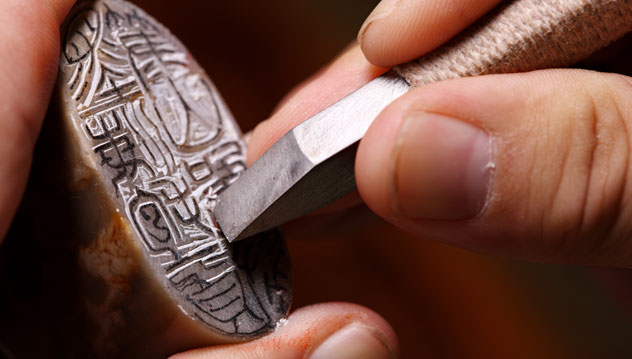If you have the skill and imagination to create original works of art, you could have a dream career as a fine artist.
What They Do
Fine artists work independently to create two-dimensional (paintings, drawings, etc.) and/or three-dimensional work (sculptures, displays, computer designs, etc.) using a variety of materials. They display this work for sale in galleries, retail stores or online. They may make custom pieces for clients, or create their own work.
A fine artist might work with “media” such as paint, charcoal, crayons, pencils, ink, paper, glass, wood, metal, stone, wax, plaster, clay, or they may use computers. Some common specializations include painting, sculpting, illustrating, printmaking, computer design, woodworking, glassblowing, and metalworking — but you are only limited by your imagination.
The exact day-to-day tasks of this job vary, but commonly you can expect to spend time:
- consulting with clients on commissioned pieces
- spending time researching ideas and getting inspired
- choosing and purchasing materials
- physically creating your art
- solving design problems of size, media, concept
- arranging for displays/showings of your work
- promoting yourself as an artist
As a fine artist you will have a creative means of expressing your ideas. You will usually set your own hours, and you will have the satisfaction of frequently completing a project and seeing the results of your work.
Who is Likely to Succeed
Successful fine artists must cultivate a talent for what they do, and develop a thorough knowledge of their chosen medium. They tend to be self-motivated, meaning they can produce art even when they have not yet found a buyer. They have good problem-solving skills to help them when they hit an impasse in their work.
Artists use their interpersonal skills to convince clients or collectors to buy their work. An artist who spends as much time promoting their art as they do making it (by showing it at galleries and selling it online or in retail stores) will be most successful.
How to Learn It
Many successful artists are self-taught, and you, too, can take this kind of hands-on approach. Experiment with the media and styles that appeal to you. This allows you to develop your own “look” based on your natural abilities and inclinations, and provides you with work to sell.
For more focused learning, turn to the masters, a time-honored method of learning art.If you want to make art that resembles the work of a famous artist, you can study their artwork in books or photographs. Learn to replicate their style, which you can then apply to your own original images.
Some established artists also take apprentices. To become an apprentice, find an artist in your area whose work you admire, and contact them through the gallery representing their work, or directly by phone or letter.
In exchange for lessons or the opportunity to watch the artist at work, apprentices may help the artist by performing art-related tasks such as cleaning brushes, preparing canvases, or even installing shows at galleries. You can then request they give you some feedback on improving your work.

